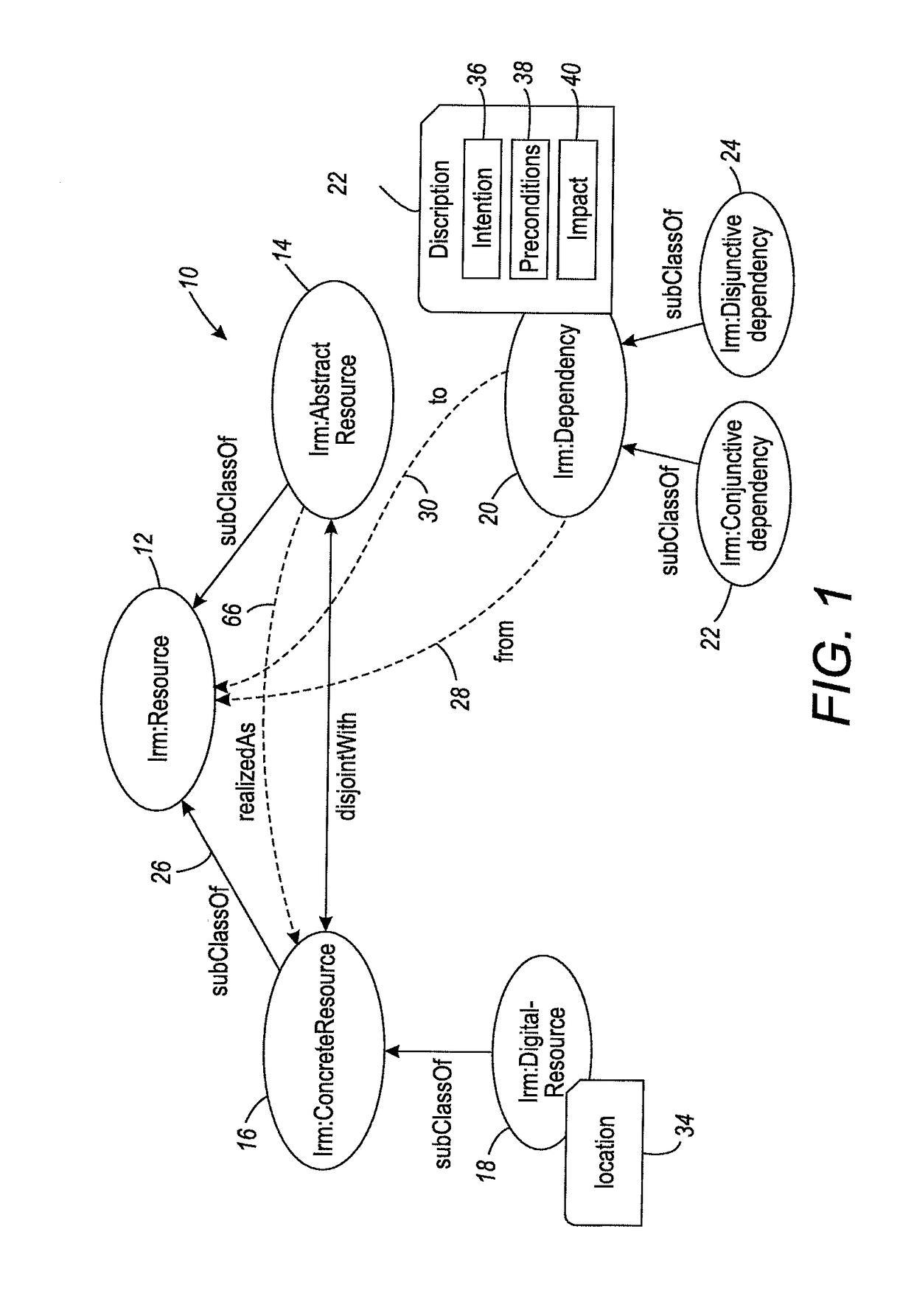Data governance: change management based on contextualized dependencies
a data object and contextual knowledge technology, applied in the field of data governance, can solve problems such as software-induced accidents, inability to understand, use, care, and sustainable governance, and inability to take into account initial intentions and assumptions
- Summary
- Abstract
- Description
- Claims
- Application Information
AI Technical Summary
Benefits of technology
Problems solved by technology
Method used
Image
Examples
case 1
[0136]The code changes: Both release and development versions of the assembly have to take this into account.
case 2
[0137]The XML document including the comments changes. In that case, there are the following possibilities:
[0138]Case 2.1
[0139]Here, the changes are to be visible only to the development team and / or the comments included in the release version are not to be impacted. In that case, no change takes place in the release mode, changes take place in the development mode only.
[0140]Case 2.2
[0141]Here, the changes are to be visible in the release mode as well. The comments included in the release version are then impacted and changes to both the release and development versions are required.
Case 3
[0142]The regulations of the company for comment formatting / styling change. In this case, changes to the release version are required but not to the development version.
[0143]3.1.2. Participating Entities
[0144]At least four objects need to be represented in this case.
[0145]Object 1: The DLL files (here, to simplify, only one DLL file will be considered, denoted DLL).
[0146]Object 2: The XML file ho...
case 3
[0167]The regulations of the company for comment formatting / styling change. In that case, changes to the release version are required but not to the development version. This means that the XSLT object changes.
[0168]The above change is also context-specific as the change should only be propagated in the release mode, however it is an easier case, as the XSLT object is not shared between two different intentions. However, there are different sub-cases as defined by the preconditions, for example, in the case that the new XSLT object is not well-formed, no change propagation will take place.
3.2. Editing Example
[0169]It may be noted that the same objects that were involved in the rendering example presented above can be shared with other dependency graphs, with the context in terms of intentions being different. For example, the fact that an XML file can also be edited using Visual studio can be expressed with the editing dependency graph shown in FIG. 16.
3.3. Examples in Other Domains...
PUM
 Login to View More
Login to View More Abstract
Description
Claims
Application Information
 Login to View More
Login to View More - R&D
- Intellectual Property
- Life Sciences
- Materials
- Tech Scout
- Unparalleled Data Quality
- Higher Quality Content
- 60% Fewer Hallucinations
Browse by: Latest US Patents, China's latest patents, Technical Efficacy Thesaurus, Application Domain, Technology Topic, Popular Technical Reports.
© 2025 PatSnap. All rights reserved.Legal|Privacy policy|Modern Slavery Act Transparency Statement|Sitemap|About US| Contact US: help@patsnap.com



